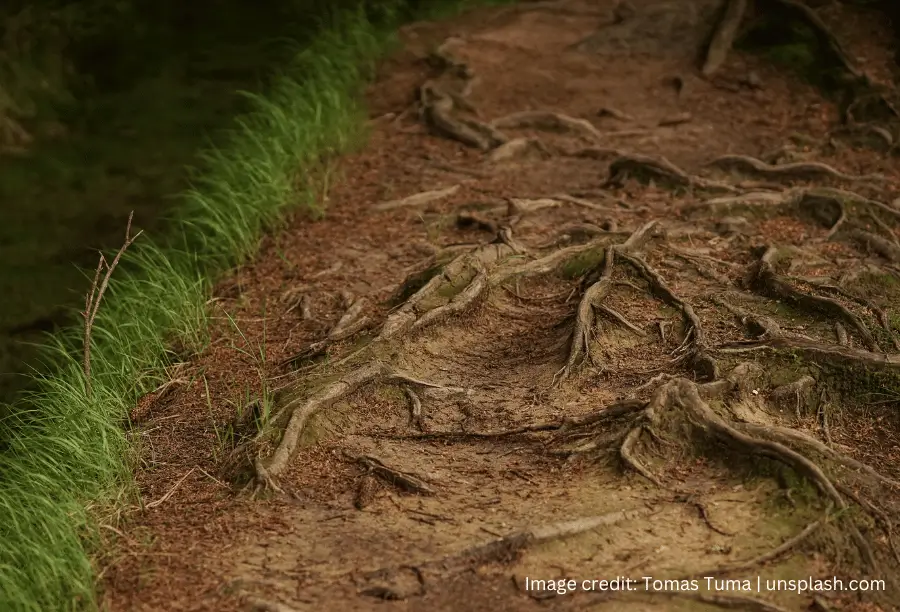Reverence. Humbled. Speechless.
That’s how I feel whenever I am in the company of old trees. To think how much have these trees seen – generations coming and going. They stand tall as a witness to many many stories throughout history. Sometimes I wonder if only the trees could talk and tell us the stories they have been part of or seen unfolding.

But then trees do talk, don’t they?
Blooming flowers signal insects and animals that they are ready for pollination. Ripened fruits send out the message, “I am ready to eat’ by its aroma. Some leaves shiver when touched sending the signal as its name – “Touch me not”.
And it goes even deeper across the whole forest! Scientists call it the “Wood Wide Web”. When you see the root of any tree, it is not just supporting that tree alone but engaged in a complex communication network underground. It’s almost Avatar-ish – “communicating” through an underground web of fungal roots called mycorrhizal networks (“myco” means fungus, “rhizal” means root).
Like the internet that connects our computers, the fungi network allows trees within the same ecosystem to share resources and even send warnings when they’re under attack by pests or diseases. They seem to saying to each other – “Help”, “Conserve resources”!
What does it mean for us?
While there is still ongoing research, for me it serves as a strong reminder of our interconnectedness with the natural world. Just as trees communicate and support each other through a web of connectivity, so do we exist within intricate systems of interdependence, both visible and invisible.
It challenges us to take a page from nature’s book, to live cooperatively, consciously share resources, and look out for each other. It underscores the importance of preserving these networks, these lifelines of forests, and by extension, our survival.
Increasing demand for food is one of the biggest drivers of deforestation. Worldwide, more than half of forest loss is due to the conversion of forests into cropland (Source: fao.org). At Urban Farms Udaipur, we are making a small dent into those statistics by growing food for the city, in the city itself by developing underutilized urban lands into green food gardens.

The “Wood Wide Web” is a testament to the profound wisdom and complexities hidden beneath everyday life, urging us to lean into nature’s inherent wisdom. As we move forward, this understanding of plant communication can guide us towards more sustainable, harmonious living within our planet’s ecosystems.


